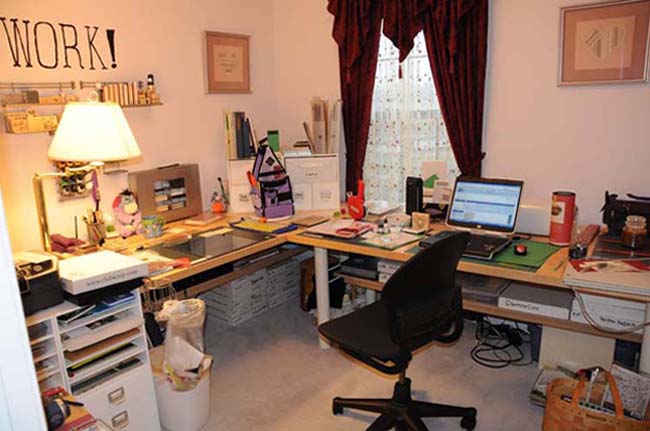I used a Christmas gift card to purchase some adult coloring books. Then, I took my books to an office supply store with a printing area and had them cut the spines off. About $2 per cut. Since all my books were the same size, it could be done with a single cut, saving even more money. They have a massive, guillotine style paper trimmer, with a vise built in and a motor driving the blade. The gentleman doing my cuts has a GF who has him trim her coloring books for her, so he took the least amount of spine. Some of my pages were still in folio format.
I can work on one sheet of paper at a time. I don't worry about messing up the other sheets, and I am not fighting the valley of a paperback book.
Go me!
Tuesday, April 26, 2016
Friday, April 22, 2016
Colored pencils!
I have fallen victim to the latest craze of adult coloring. Being me, I've gone out and done some research on how to color. Yes. I really did research.
Here are the websites where I gathered information that I found to be useful.
Here are the websites where I gathered information that I found to be useful.
- Dickblick.com You will have to scroll to the bottom to find the videos that are tutorials on colored pencils.
- Elfwood.com More text than graphics, but lots of useful information. Was I absolutely wowed by his finished graphic? I wasn't sure it was finished.
- Art is Fun This one is a brief, direct, useful set of instructions. They also include links to more information and some very good instruction books.
- The Virtual Instructor Comparison chart of some different brands of colored pencils. Also has a lot of the instruction you will find on Pinterest, like drawing and eye and a nose.
- The Coloring Book Club Blog This one has a good bit of instruction, but also is part of a monthly club, where you pay to download coloring books that you then print out for yourself.
There are three basic types of colored pencils.
Wax based -the most common type.
Oil based -not nearly as common.
Water-soluble -also known as watercolor pencils, can be wax or oil based. They are not actually watercolor paint in a pencil form.
It is OK to use all three types of pencil in a single piece of artwork.
When making a pencil, pigment is mixed with wax or oil, some copyright ingredients, and clay to form a colored paste. That paste is extruded into a thick, noodle-like core. The cores are dried, cut to length, and put inside a shaped 'sandwich' of wood to create a pencil. So, you talk about the 'core' of a colored pencil, not the lead of it.
Within the three types, there are sub-types based on whether the cores are very hard or soft, the size of the core, the shape of the wood, and whether there is a wood casing at all.
The amount of pigment, the final rigidity of the core and the quality of the wood used all combine to create a better or not so nice pencil. Cheap wood doesn't sharpen well. Fragile cores break easily, even breaking inside the wood casing of the pencil. Dropping a colored pencil isn't a good thing. Heating a wax based pencil will soften the core and reduce breakage. Since I live in Florida, just working outside on my lanai can change how my pencils respond to pressure while I'm using them.
Don't assume that all cores should be soft and responsive. There are times when a much harder core is desired. Detail work is best done with a harder core that can be sharpened to an extremely precise point.
Subscribe to:
Comments (Atom)




